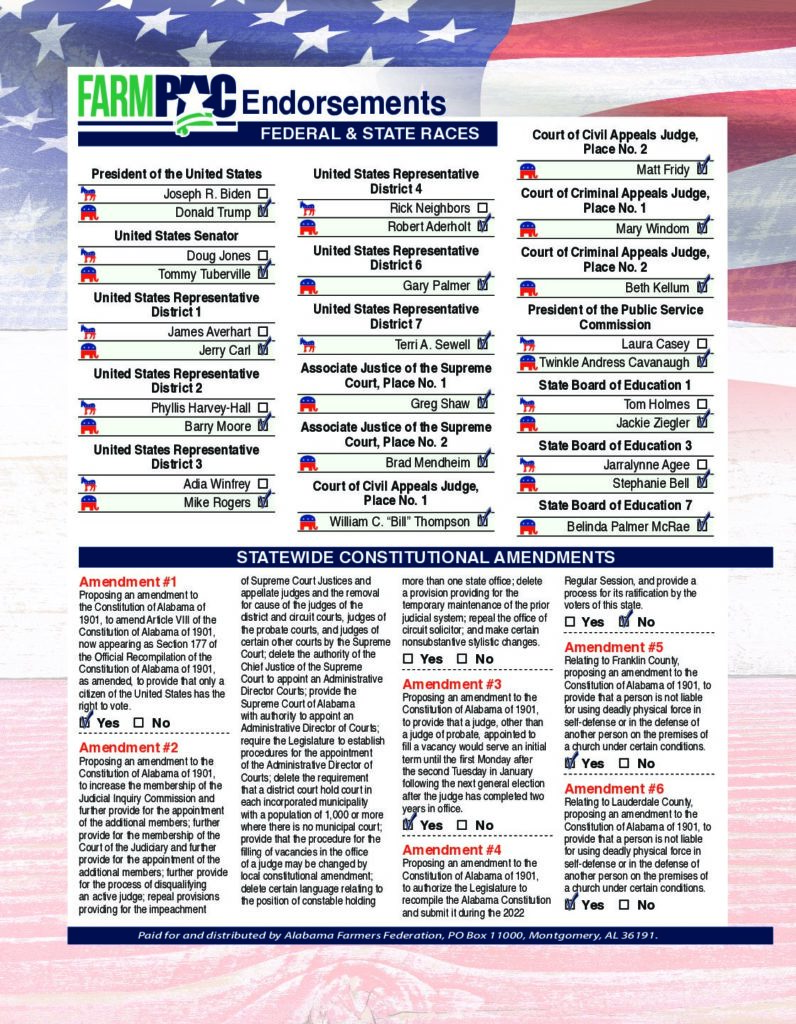Headed To Harvest: Farmers Expect Average Yields, Low Prices

As farmers reported average or above average yields this year, low commodity prices could cast a shadow on 2015, and forecasts for a wet fall have farmers hurrying harvest along.
Corn and peanut farmer Charles Turner said he was happy after digging his peanuts in late September.
“The peanuts graded well and yielded good,” said Turner, Geneva County Farmers Federation president. “We had some disease problems, but I’m elated with my peanut crop.“
Turner said despite his strong peanut yields, other fields looked spotty in the Wiregrass. He said cotton appeared strong throughout the area.
Alabama Farmers Federation’s Carla Hornady said most commodity prices are down from their highs.
“In July soybeans reached $10 a bushel, but now they’re trading in the $8 range,” said Hornady, Federation Cotton, Soybean, Wheat & Feed Grains Divisions director. Hornady said cotton is level at 61-cents pound while corn is fluctuating at or below $4 a bushel.
Summer provided favorable weather for many hay farmers who produced better quality and higher yields than last year, said Federation Hay & Forage Division Director Nate Jaeger.
Dry conditions occurred in many areas of the state in late summer, followed by days of rain from weather systems moving in from the Gulf of Mexico.
Barbour County farmer Walt Corcoran agreed with Turner’s assessment but said a combination of rain and lingering humidity brought his harvest to a screeching halt in early October.
“We were completely stopped for a while,” Corcoran said. “Overall, we’re looking at a pretty good harvest. It won’t be the best, but it’ll be one of the better ones.”
Farmers are keeping a close eye on the weather as researchers like Auburn University’s Brenda Ortiz predict one of the strongest El Niño climate phases in decades.
She said it could make for a tricky fall harvest in Alabama and the lower Southeast.
“The strongest El Niño on record occurred in 1997, and the forecast for this year could top that,” said Ortiz, an associate professor in the College of Agriculture’s Department of Crop, Soil and Environmental Sciences. She said climate prediction models forecast a record El Niño for October, November, December and January, which could mean higher than average rainfall and lower than average temperatures.
“They might see significant yield losses if they delay harvesting,” she said. “It also could prove challenging to find a suitable window of good weather to dig peanuts and defoliate cotton before harvest.”
Limestone County farmer Stuart Sanderson said strong crops and timely showers helped his north Alabama family farm.
“We got ahead of schedule thanks to the weather. This time of year you still have long days so you can get several more hours of harvest time,” he said in early October. “We try to get as much done as we can before the days get shorter.”
Sanderson said weather was favorable, breakdowns were few and problems with their newly expanded grain facility were covered by warranties. Regardless of the challenges, Sanderson said harvest is about more than reaping a profit—it’s about reaping God’s blessings.
“There’s so much in the Bible about reaping what you sow, and that’s what so special about harvest time to me,” he said. “Our farm has been built in a model that has been around for five generations. Our faith in God is first, our family second and our farm comes third; and we put it in that order.”
